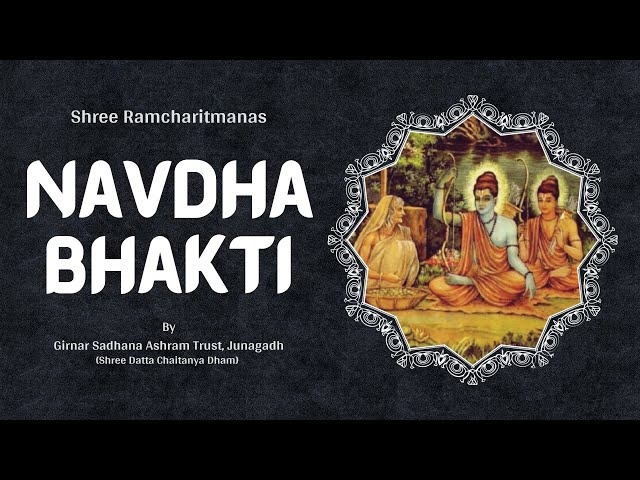
Devotion is the main path to attain God in Sanatan Dharma. Ordinary people can attain God through devotion. It is contained in Sanatan scriptures that devotees are under the control of God. At the same time, God is also under the control of the devotee. God's grace definitely showers on the devotees who do true devotion. With his grace, the devotee attains divinity. There are nine types of devotion. These are called Navdha Bhakti. But do you know what Navdha Bhakti is? Let's know everything about it-
What is Navadha Bhakti?
It is contained in Sanatan scriptures that in Satyug, Bhakt Prahlad was the first to preach Navdha Bhakti. He gave this sermon to his father Hiranyakashyap. In those days, Hiranyakashyap did not believe in God. To make him aware of the truth of life, Bhakt Prahlad preached Navdha Bhakti to his father. After this, Lord Shri Ram preached Navdha Bhakti to Mata Shabari. This is from Treta Yug.
Navdha Bhakti is mentioned in the Aranyakand of Ramcharitmanas. Lord Shri Ram was exiled for fourteen years. During the exile, Lord Shri Ram met Mother Shabari. At that time, Mother Shabari welcomed Lord Shri Ram by feeding him the leftover berries. This shows the love and affection of Mother Shabari towards Lord Ram. At that time, Mother Shabari was also frustrated for feeding him the leftover berries. Then Lord Shri Ram resolved the dilemma of Shabari by preaching Navdha Bhakti.
Shravanam Kirtanam Vishno: Smaranam Padasevanam.
Archanam vandanam daasyam sakhyamatmanivedanam.
Nine types of devotion
- Shravan- The first devotion is to listen to the stories and leela of God. For this, the example of Raja Parikshit is given. Raja Parikshit did devotion to the Lord through Shravan.
- Kirtan- The second devotion of Navdha Bhakti is Kirtan. A saying is very popular even in Kaliyug.
"Kalyug is based only on name,
Sumir Sumir Nar Utrahin Para”
The meaning of this couplet is that God can be attained by singing hymns and devotional songs. Shukdev attained God by singing hymns.
- The third devotion of Navdha Bhakti is remembrance. Any devotee can attain the higher world by remembering and thinking about God. Devotee Prahlad attained God by remembering Narayan-Narayan.
- God can also be worshipped through Padasevana. This is described in Navdha Bhakti. Goddess Lakshmi, the goddess of wealth, worships Satyanarayana through Padasevana. Dedicating everything at the feet of Lord Shri Hari is Padasevana Bhakti.
- Archana Bhakti is also described in Navdha Bhakti. Through Archana Bhakti, the devotee worships Lord Shri Hari by dedicating his body and mind. King Prithu used to do Archana Bhakti. After this comes Vandan Bhakti. The head of this Bhakti is Akrur Maharaj. Akrur Maharaj worshipped the Lord through Vandan Bhakti. It is contained in religious scriptures that there were familial relations between Akrur Maharaj and Lord Krishna. In relation, Akrur Maharaj was the uncle of Lord Krishna, the savior of the world.
- In Treta Yug, Hanuman Ji served Lord Shri Ram as a slave. The main devotee of Dasya Bhakti is Hanuman Ji, who selflessly served and worshipped Ram Ji. For this, Hanuman Ji is considered to be the ultimate devotee of Lord Shri Ram. After this comes Sakhya Bhakti. In Dwapar Yug, Arjun worshipped Lord Krishna by becoming a friend. For this, Arjun was the main devotee of Sakhya Bhakti. The last devotion of Navdha Bhakti is Atmanivedan. Its main devotee is King Bali. King Bali worshipped Lord Narayan through Atmanivedan.
--Advertisement--

 Share
Share



